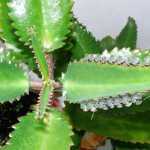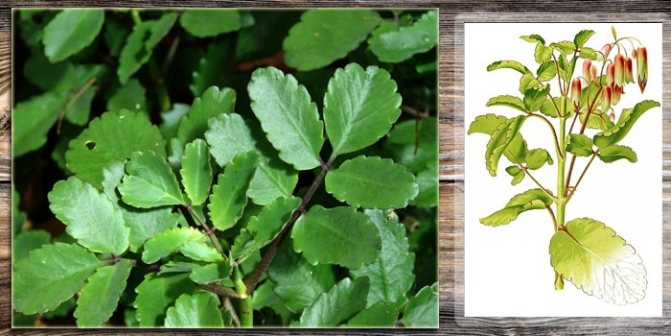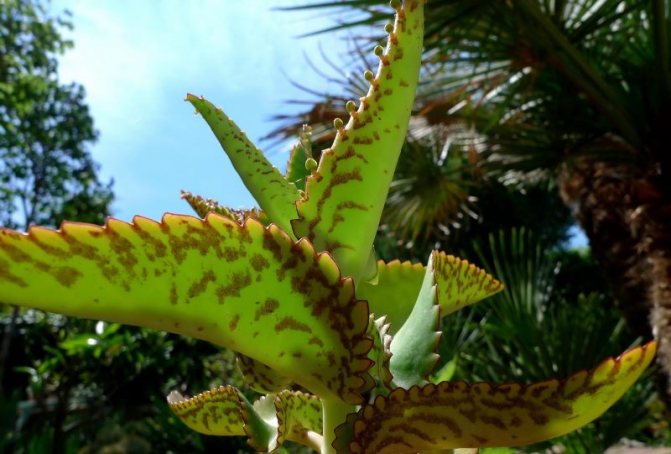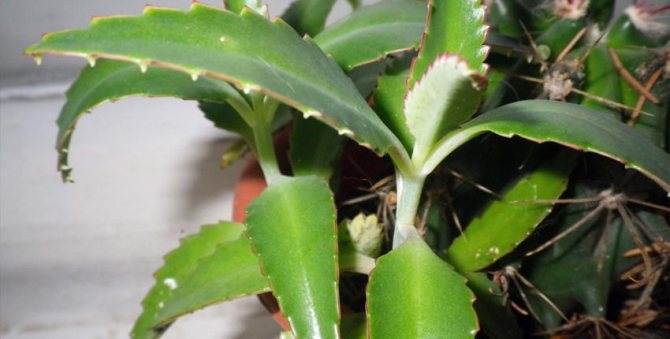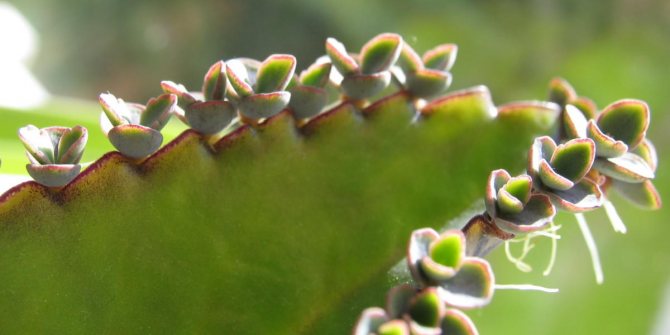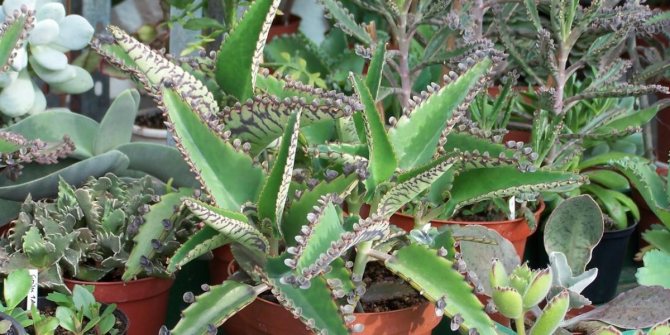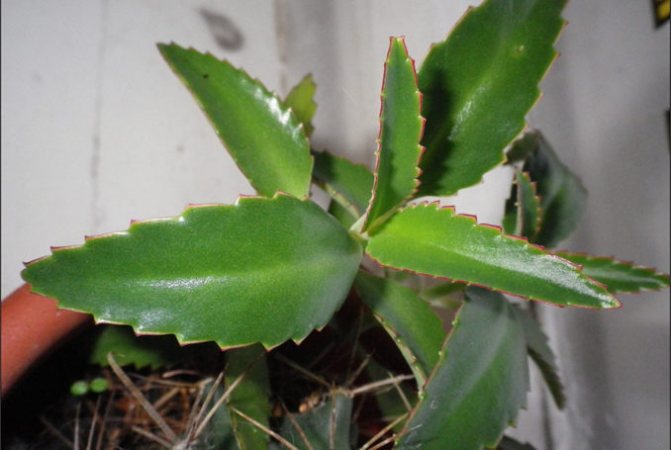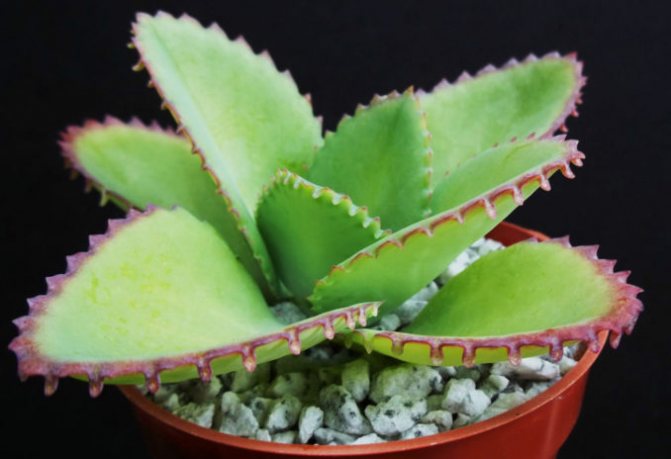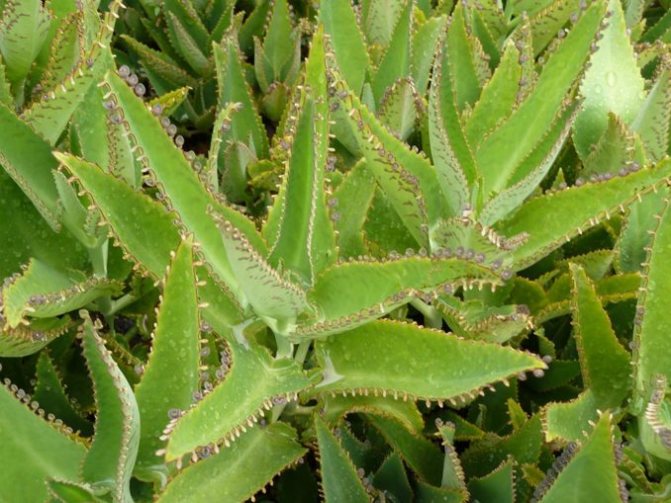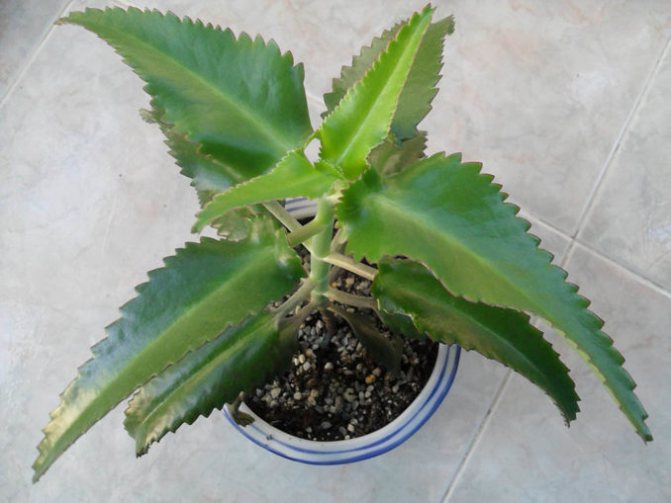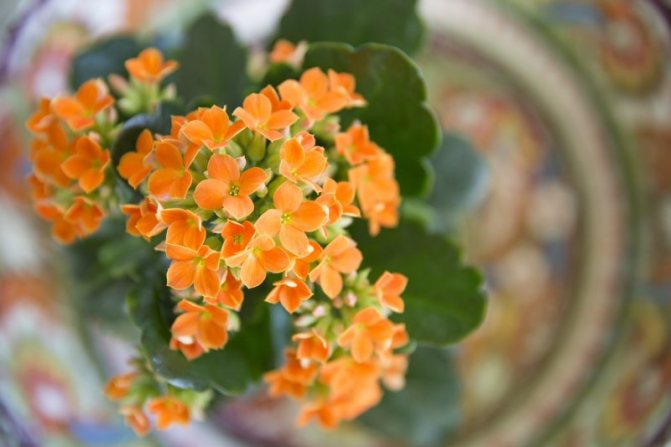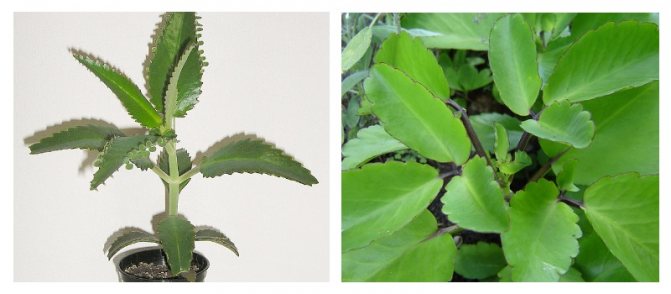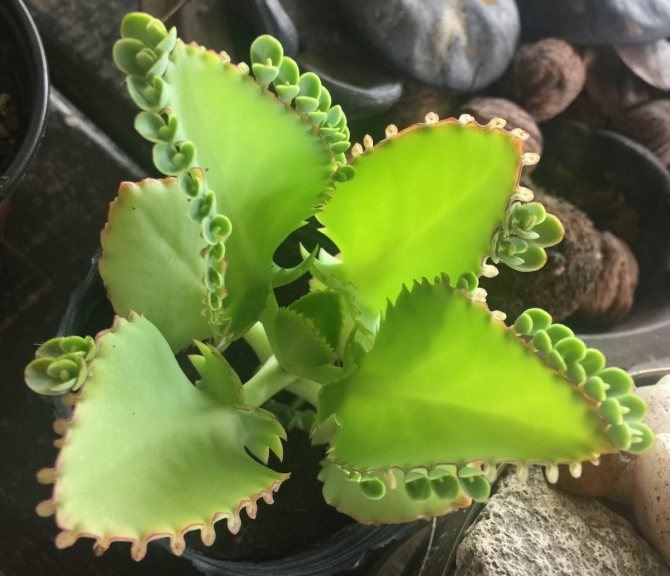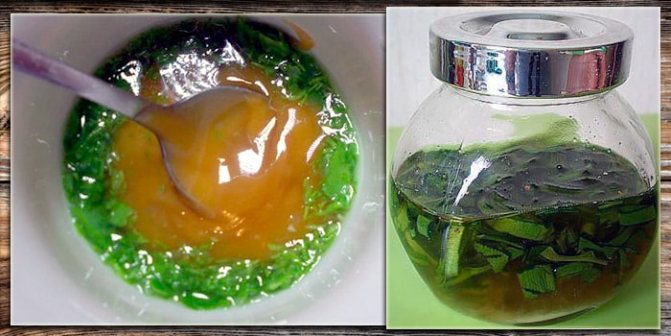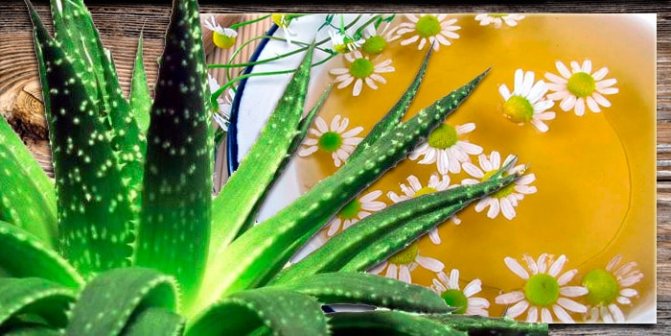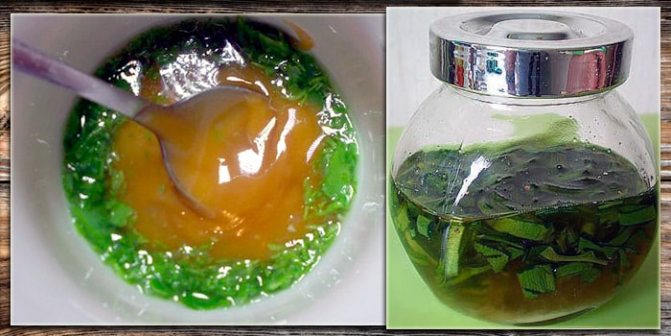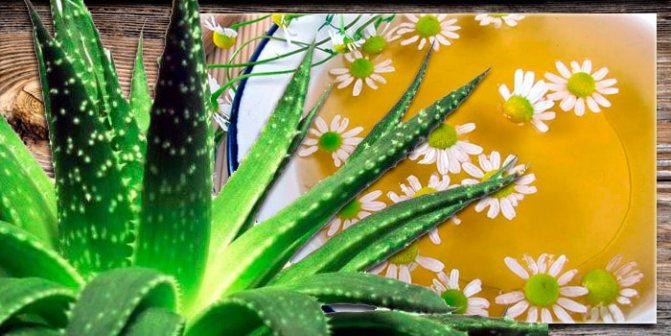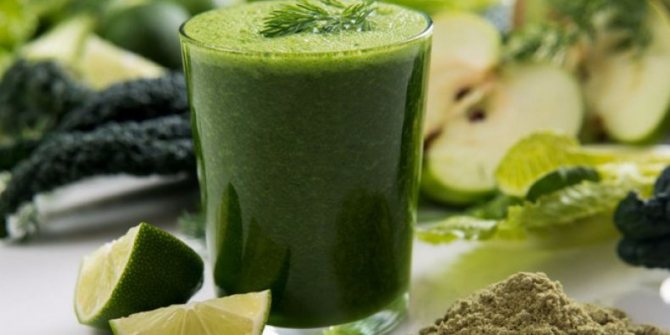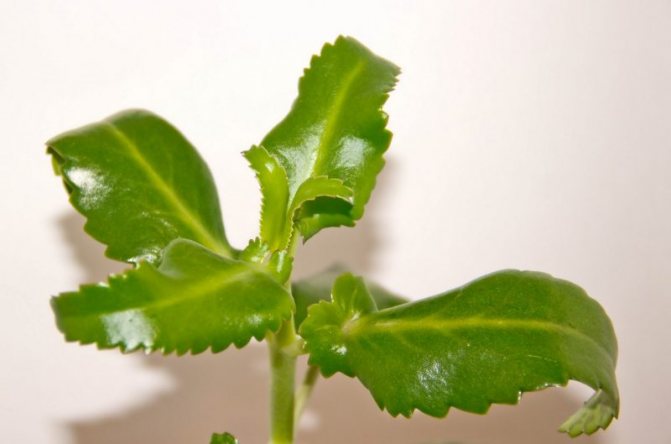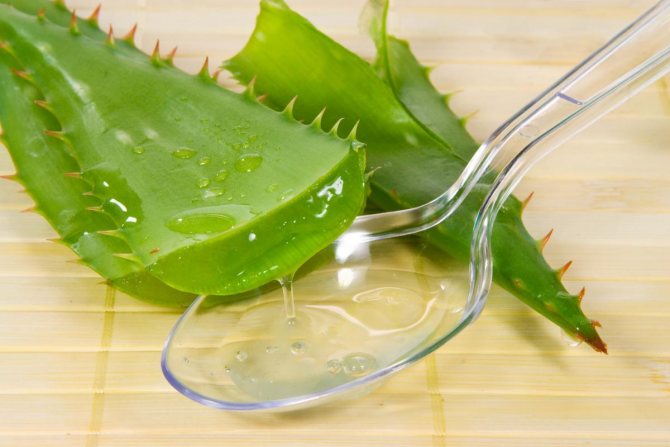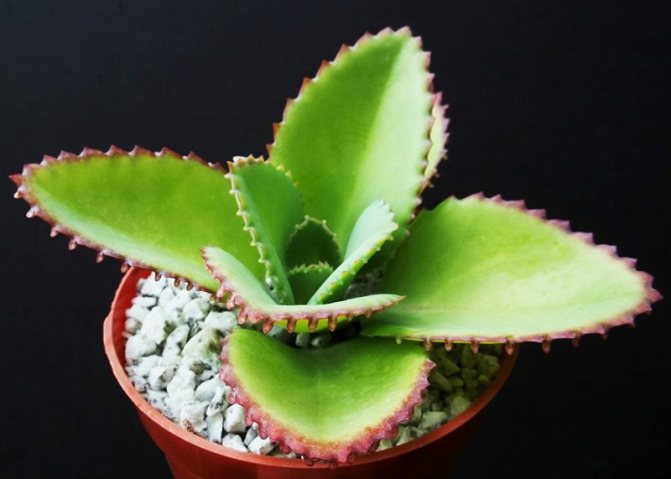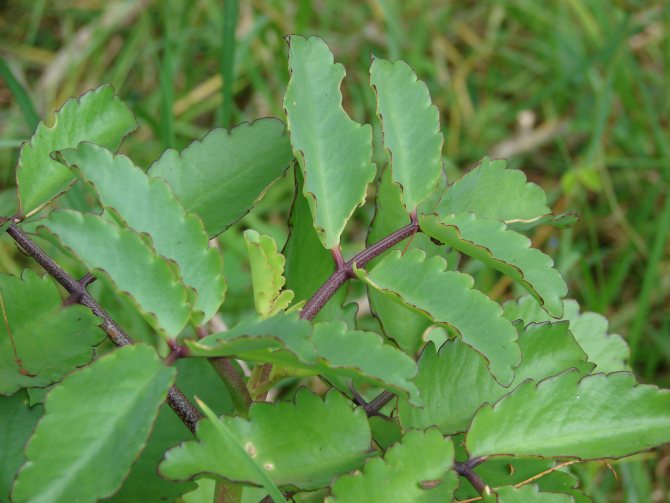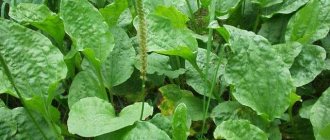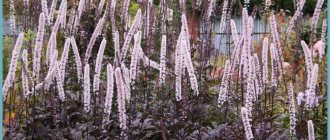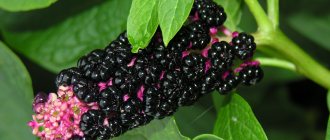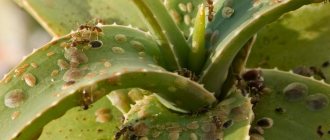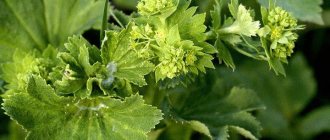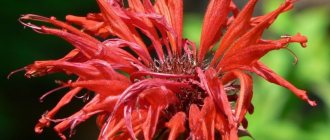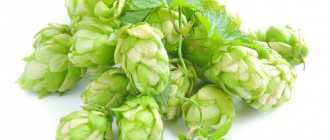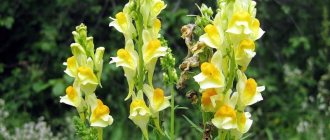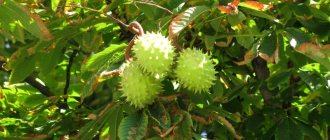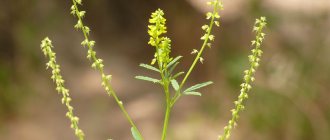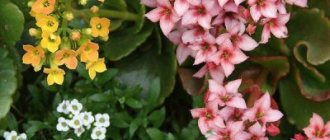One of the most popular indoor plants is Kalanchoe, since ancient times it has been used as an affordable folk medicine. It is unpretentious and easy to grow. The Kalanchoe flower, the healing properties of which are associated with a rich composition, is used for external and internal reception.
The chemical composition of the plant
Kalanchoe is a valuable plant. It contains a large number of biologically active substances that are so necessary for the human body. The value of the plant lies precisely in its chemical composition, which consists of polysaccharides, organic acids, enzymes, vitamins, flavonoids, micro- and macroelements. The unique combination of these substances provides the plant with high therapeutic properties.
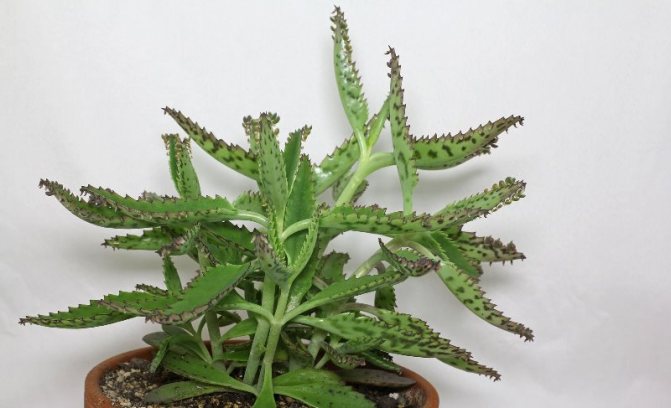
Due to the inclusion in its composition of flavonoid glycosides with P-vitamin activity, preparations based on Kalanchoe have a choleretic and antimicrobial effect. The funds have a strengthening effect on the walls of blood vessels, remove radioactive substances and toxins from the body.
Tannins are characterized by astringent, hemostatic, anti-inflammatory and antimicrobial action. Enzymes help activate many biochemical reactions in the human body.
Making juice from leaves
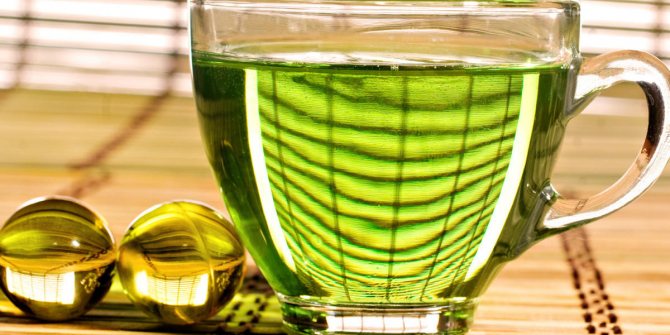

To obtain juice from Kalanchoe leaves, we carry out the following manipulations:
- we take the bottom sheet, as the most useful, and carefully cut it off from the stem;
- put the sheet in a darkened bag and place it in the refrigerator on the lower shelf. This will make it possible to activate its biologically active properties in the leaf;
- then the cut sheet should be rinsed well with water;
- then chop the sheet well with a sharp knife. It can be passed through a juicer;
- then we take gauze and squeeze through it the gruel obtained at the previous stage from the Kalanchoe leaf. Please note that the juice should turn out yellow.
So that the resulting juice can be used in the future without harming oneself, it can be poured into a previously sterilized jar and tightly closed with a lid. You need to store the jar in the refrigerator at a temperature of 10 ° C. Remember that after doing all this, the juice can be consumed as directed only for one week. Therefore, you should not prepare the tincture with a margin, since it will still disappear or cause harm to your health, not benefit.
For a longer shelf life of the prepared juice at home, it should be mixed with vodka. You need to mix in the following proportions: 10 parts of juice and 1-2 parts of vodka. The resulting solution must be mixed well and poured into sterilized jars. We close them with a tight lid and put them back in the refrigerator as far as possible from the freezer.
As a result, your labors will not be lost within two years, and the juice will not harm the body even at the end of the shelf life. Some recipes for making Kalanchoe juice involve boiling it. But it all depends on the disease against which the tincture will be prepared.
Due to the abundance of beneficial properties recognized even by official medicine, the pinnate Kalanchoe is one of the most popular potted houseplants.Even a novice florist can take care of an unpretentious succulent. In addition to its medicinal properties and contraindications, it is necessary to know some of the nuances of growing a "home doctor" so that the flower will delight with lush greenery for many years and remain useful for health.
Content
- Brief description of the plant
- Composition and healing properties
- Features of the chemical composition
- Beneficial features
- Possible harm and contraindications
- Necessary conditions for growing
- Location and lighting
- Air humidity
- Requirements for soil and pot
- Care features
- The need for watering
- Top dressing
- Pests and diseases
- Reproduction methods
- Children
- Sheet
- Seeds
- Cuttings
- Transplant timing and technology
- Possible growing difficulties
Brief description of the plant
Kalanchoe pinnate (in Latin - Kalanchóe pinnáta) is a plant species from the Kalanchoe genus, attributed to the Tolstyankov family. Also known as Bryophyllum calyx (some experts combine the genera Kalanchoe and Bryophyllum).
It is a small compact shrub grown as a pot crop. In the wild, it is found in the North and South American continents, in Asia, on the island of Madagascar. In its natural environment, it is a tall shrub reaching a height of a meter or two. As an indoor culture, it rarely grows above half a meter.
The stem of the bush is powerful, fleshy, hollow. Branches and lignifies as it grows in the lower part. Leaves on petioles are opposite, have a triangular shape and jagged edges. The property of the pinnate Kalanchoe to form many brood buds between the denticles and then babies with aerial roots greatly simplifies the process of its reproduction.
The color of the leaves is rich green. They are juicy, leathery, 5-20 cm long and no more than 10-12 cm wide.
At home, bushes over two years old bloom. As a rule, in the cold season, with a shortened daylight hours. Hanging buds are numerous, but not large, about 4 cm in size, collected in racemose paniculate inflorescences. Tall arrow-peduncles "carry out" light pink tubular flowers outside the foliage.
The fruits of Kalanchoe pinnate are capsules no more than 1.5 cm in size with small oval seeds. The root is branched and short.
Composition and healing properties
The unique chemical composition of the leaves and stem of the flower determines the anti-inflammatory, bacteriological and regenerative properties of the medicinal preparations made from them.
Features of the chemical composition
Both the leaves and the stem of the flower contain a lot of biologically active substances that are of great value to the human body:
- flavonoids and glycosides (in particular bryophyllins A, C, bersaldegenin-3-acetate);
- "Set" of natural acids (acetic and citric, malic and oxalic);
- many macro- and microelements, including magnesium, iron, potassium and others;
- food enzymes;
- vitamins of groups C and P;
- polysaccharides, catechins, tannins.
It is the combination of a large number of useful ingredients that determines the high healing properties of Kalanchoe pinnate - they are used in the treatment of many diseases.
Beneficial features
The value of Kalanchoe pinnate as a medicinal plant is so great that its industrial cultivation is carried out as an annual in the southern regions of Russia. At pharmaceutical enterprises, the juice of the plant is produced from the raw material obtained (its alcohol tincture is on sale), and from it is a lyophilisate, which is directly used in pharmacological medicinal preparations.
- The bactericidal and bacteriostatic effect of pinnate Kalanchoe juice stops the multiplication of many groups of microbes.Its antiseptic properties are especially effective in relation to infectious agents, therefore it is widely used in the treatment of purulent wounds, burns, trophic ulcers, caused, among other things, by diabetes mellitus.
- Due to the presence of tannins in the plant, it has hemostatic, astringent properties. It is used to treat aphthous stomatitis and gingivitis. In the form of rinsing - for inflammation of the gums, oral mucosa, chronic tonsillitis.
- In gynecology and ophthalmology, drugs based on feathery Kalanchoe are also widely used (they are especially effective in treating eye burns).
- When it is necessary to increase the body's defenses in the treatment of anemia, bronchial asthma, chronic gastritis and ulcers, the effectiveness of preparations based on the pinnate Kalanchoe is high.
- Cosmetologists also find in their practice the possibilities of using a healing flower: they use the sap of the plant to treat acne and generally normalize the work of the sebaceous glands, reduce dark circles under the eyes, strengthen hair and nails.
- Traditional medicine recipes are also based on the use of both cirrus Kalanchoe juice (it is instilled into the nasal sinuses when treating a running cold, lotions, compresses are made to treat wounds and varicose veins), and fresh green leaves, which are applied to abscesses, skin lesions.
Read also
What diseases do Kalanchoe have and how to deal with them
The use of Kalanchoe juice with Cahors and honey is widespread: 75 g of fresh juice is mixed with 4 tablespoons of honey and 170 g of Cahors. Insist for several days and take orally three times a day before meals, a tablespoon - to increase appetite, with a breakdown, exhaustion.
Possible harm and contraindications
Despite the high medicinal benefits, like any remedy, the plant also has contraindications. Taking Kalanchoe preparations inside is not recommended:
- hypotensive patients;
- with severe renal and hepatic pathologies;
- during pregnancy and lactation;
- with individual intolerance to the components that make up the plant.
Before taking any Kalanchoe-based drugs on your own, you need to consult a doctor. When applied externally, local allergic reactions may occur - rash, redness.
Necessary conditions for growing
The feathery Kalanchoe is an unpretentious succulent, and does not require special conditions.
The most comfortable summer temperature range for him is 20-25 ° C. At the same time, both heat and drought will not affect the state of the flower too negatively. In winter, in order to give the plant the opportunity to fully rest during the dormant period, it is advisable to keep it in a room with a temperature of 12-18 ° C. Its fall below 10 ° C creates a threat of death.
Location and lighting
The flower loves sunlight, but in the midday summer heat it is advisable to shade its foliage in order to avoid burns. You don't need to do this in winter.
The pot with Kalanchoe can be placed on the windowsills of the eastern, western, northern sides of the house or in the back of the rooms, but so that it receives full-fledged "light" baths for several hours a day.
To select the location of the flower, it is also important to take into account that it reacts painfully to drafts.
Air humidity
A prolonged increase in air humidity is fraught with the development of fungal infections for pinnate kalanchoses. Unlike many plants, it perfectly tolerates home air overdried by heating devices in winter, and any methods of foliar humidification are contraindicated for it.
Requirements for soil and pot
As a soil for Kalanchoe, it is best suited for purchased cacti. You can prepare a suitable substrate yourself:
- mix equal parts of sod leafy land, coarse sand and humus;
- add crushed charcoal (preferably birch);
- fragments of a brick are crushed into crumb and also mixed in a small amount into the composition.
The pot is selected wide and roomy. The main requirement for the container is the presence of drainage holes for draining excess water.
Care features
In addition to watering and feeding, the flower needs periodic pruning. This helps to give it the desired shape: stop excessive growth in height, remove branches that are thinning or interfere with other sprouts, and enhance the development of lateral shoots.
Subject to the rules of home care, a Kalanchoe older than two years will delight you with beautiful flowering every year. If the purpose of cultivation is to obtain medicinal raw materials - leaves - the peduncles are removed in time so that the flower does not waste energy on them.
The need for watering
In spring, the plant enters a period of active vegetation, which lasts until autumn. At this time, he needs regular watering in small portions. Kalanchoe pinnate is watered when the top layer begins to dry - about once every 3-4 days in spring and summer. In winter, the intensity of watering is reduced.
Water is used well-separated, at room temperature or a few degrees warmer. Excess moisture leads to rotting of the root system and then the trunk. It is much easier for a flower to survive a temporary drought than constant "overflow".
Top dressing
Kalanchoe is fertilized with ready-made commercial feedings for succulents and cacti, which, together with water for irrigation, are applied once every 2 months. If the purpose of growing is flowering, in order to activate the budding process, fertilizing is applied a little more often.
In winter, when the plant goes into hibernation, there is no need to fertilize it.
Read also
The magical healing properties of Kalanchoe
Pests and diseases
For Kalanchoe pinnate, the following insect pests are dangerous:
- aphid - feeds on plant sap and multiplies rapidly. The affected flower is treated with an aqueous solution of laundry soap. With a large amount of damage, the flower is destroyed;
- scabbards - also like to feast on fleshy leaf plates. A sign of their appearance is the drying of the leaves, which change color to gray. Insects are collected by hand and wiped with vodka or alcohol;
- mealybug - leaves behind a sticky white mark. It can also be removed with soap or alcohol-soap solution.
If "mild" methods of fighting parasites did not help, use chemical insecticides.
High humidity, especially in combination with a lack of light, can provoke the development of gray rot on the Kalanchoe. The disease manifests itself in the form of weeping spots on the leaves. A long period of heat and drought is fraught with outbreaks of powdery mildew. In both cases, treatment with any fungicide for indoor plants is effective.
If improper care led to the development of stem rot, which manifests itself in the formation of black spots on the leaves and stems, and treatment with special means did not help, the flower will have to be destroyed.
Reproduction methods
Indoor pinnate Kalanchoe can multiply by children, leaves, cuttings and seed method formed along the edges of leaf plates.
Children
The first option is the simplest. The kids are, in fact, ready-made small Kalanchoe with two pairs of leaves and tiny roots. When you shake the bush, they fall off the leaves and easily take root in the ground. That is why the feathery species is called viviparous. After rooting, the matured small plants are transplanted to a permanent growth site.
Sheet
If babies from brood buds are not formed on a leaf, their appearance can be stimulated by cutting off the leaf plate, drying it for a day, placing it on wet soil with the back side down and sprinkling it with earth a little.It is necessary to make a semblance of a greenhouse from cling film or trim the bottom of a plastic bottle before rooting - so that the air temperature is kept at 23-26 ° C and high humidity remains.
Seeds
Reproduction of Kalanchoe pinnate seeds is also not difficult, but it takes more time: in the spring they are laid out on a moistened soil mixture, sprinkled with a thin layer of it and kept under a transparent film at a temperature of 20-23 ° C.
Seedlings appear in a month or a little later. The seed method allows you to get a large number of plants at the same time.
Cuttings
For cuttings, you can use the tops of the branches after pruning, or cut the adult shoots separately. They are divided into pieces 7-8 cm long and rooted in water or sand and peat are swept away in equal parts. The seedling is ventilated every couple of days. The waiting period for the emergence of roots is up to two weeks.
Transplant timing and technology
Kalanchoe pinnate is transplanted as needed, when the roots become cramped in the pot and can be seen on the surface of the earth:
- a wide pot with drainage holes is selected in a larger size, the drainage layer is laid on the bottom, sprinkled with a layer of soil;
- before transplanting, the plant is watered to moisten the soil;
- using the transshipment method, trying to minimize the disturbance of the horse system, with a lump of earth they transfer the Kalanchoe to a new place and cover the empty space in the pot with earth, slightly tamping it.
Planned transplants are carried out in the spring.
Necessarily transplanted after purchase from the store. Usually, temporary containers are filled with poor peat soil that is not suitable for long-term use.
Flowering plants cannot be transplanted until the end of the flowering process.
Possible growing difficulties
Kalanchoe is unpretentious. Problems with the maintenance of a flower arise only with chronic non-observance of the basic rules of caring for it. Sometimes a two-year-old bush "refuses" to bloom (although this variety is usually grown for its medicinal properties).
Budding usually occurs in winter, with a decrease in daylight hours and at cool temperatures. To stimulate this process, for a month and a half, the flower is immersed in darkness for 10-12 hours daily, the rest of the time, dim lighting is maintained. Reduce the frequency of watering and keep the temperature below 16 ° C.
After the buds appear, the plant is transferred to its usual place. The beneficial qualities of Kalanchoe do not diminish from flowering, but at the same time it spends less energy on the formation of healing leaves.
Contraindications
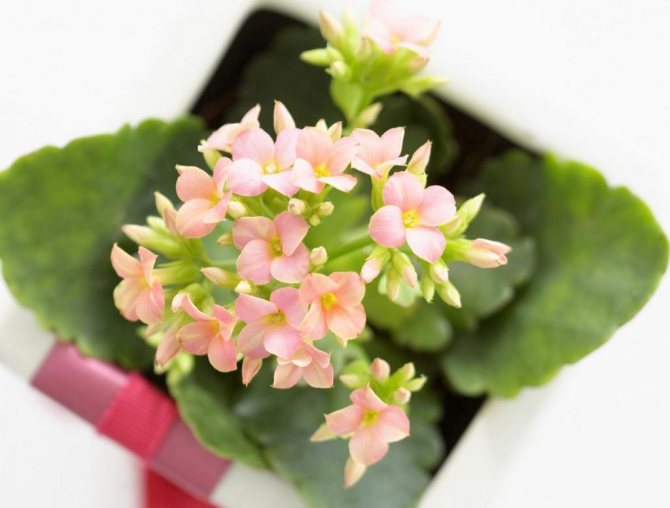

Despite the presence of such an impressive list of useful and medicinal properties, the use of Kalanchoe juice has its own contraindications. The fact that in this situation there are contraindications must be remembered, since self-medication can harm your health. To prevent this from happening, be sure to consult your doctor. He will tell you for sure if you have any contraindications to taking medications based on Kalanchoe juice.
Preparations made from Kalanchoe may have the following contraindications:
- allergies;
- pregnancy;
- liver disease (hepatitis and cirrhosis).
In addition, contraindications apply to those people who have:
- low pressure;
- tumors of various etiologies;
- joint diseases.
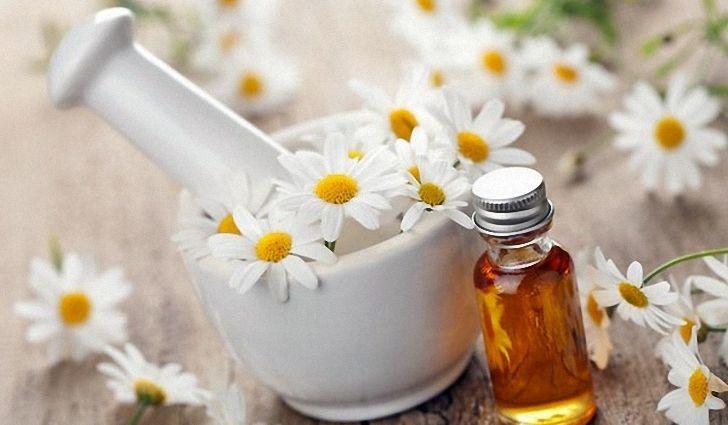

But, despite such a list, there is no real confirmation of the harm from taking drugs from Kalanchoe today. But nevertheless, it is worth remembering about these contraindications and, if possible, do not use tinctures made on the basis of a "home doctor" if any. It must be remembered that contraindications are possible when combining several herbal preparations at once in one course of treatment.
Thus, the Kalanchoe as an indoor flower has a lot of advantages and is an excellent assistant in the treatment of a wide variety of ailments in people of different ages. While still a beautiful decorative flower, Kalanchoe will be a great addition to your apartment.
Healing properties of Kalanchoe
For medicinal purposes, an adult plant is used, the length of the stems of which is at least 40-60 cm, and the lower part is compacted. Tinctures, ointments are prepared from the plant, used in the form of lotions, tampons, drops.
Kalanchoe is known for its anti-inflammatory, antiseptic, wound healing, hemostatic and tonic properties. In addition, it is a strong stimulant for tissue repair. It is used to cleanse and quickly heal wounds and ulcers. The plant helps to fight even long non-healing wounds affected by purulent processes.
Appearance


Cirrus in its natural habitat reaches a fairly large size: up to 1 meter in height. At home, the plant is smaller, however, no less beautiful and can bloom profusely already in the second year of life.
Have Cirrus the soft, upward-directed stem is surrounded by opposite leaves. The leaves are fleshy, oval, pinnately dissected at the ends. The medicinal plant blooms with pale pink or white inflorescences.
Degremon's leaves are ovoid, very elongated. Sometimes the leaf halves even fold along the midline. The leaves are long enough, in wildlife they grow up to 20 cm.
The plant is gray-green in color, with purple spots on the lower part of the leaves.
Photo
Use of plant-based preparations
Kalanchoe is used not only for external, but also for internal use. Its juice is taken for inflammation in the stomach or kidneys. Drink should be 1 tsp. juice diluted with water. A cough is treated with juice mixed with honey.
The analgesic and anti-inflammatory properties of the plant make it possible to use it for the treatment of arthritis and arthrosis. The drugs are taken orally or used for compresses.
A healing tincture can be prepared from the plant. To do this, you need to mix 150 ml of juice, 350 ml of honey and 250 ml of Cahors wine. Place the container in a dark place for 5 days, stir occasionally. The mixture is taken in 1 tbsp. l. 3 times a day 20 minutes before meals. The course of treatment is 2-3 weeks. The tincture allows you to quickly restore vitality after serious illness and strengthen the body.
Folk use
Most useful properties The plants were initially noticed not by doctors at all, but by the most ordinary people who grew Kalanchoe (a surgeon without a knife), and they used it as a medicine.
For home treatment, fresh juice is used: it is extracted from the fleshy leaves of the plant, the trunk.
When processing Kalanchoe, with the aim of using it for medicinal purposes, it retains many useful properties, and the prepared medicines are stored for a long time.
Alcohol tinctures are made from the leaves of the plant.
Ointments are prepared mainly from juice.
The crushed leaves help in removing warts.
It is popularly believed that a few eaten leaves can fully restore strength, restore good spirits.
Kalanchoe helps to cope with stress and seasonal depression.
Treatment
The health benefits are undeniable. In medicine with its helptreat many diseases. What exactly treats Kalanchoe and how to apply it:
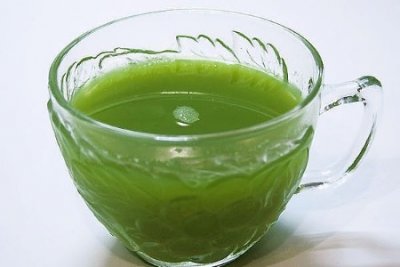

Gargling with juice diluted in water helps well with sore throat, tonsillitis. And also it perfectly helps in the treatment of sore throats.- Lotions from the pulp of the plant help to quickly heal purulent wounds, ulcers on the legs and burns.
- Regular consumption of juice treats gastritis and stomach ulcers, reduces pain.
- The use will help with inflammation of the eyes (conjunctivitis and blepharitis); they are treated with instillation of Kalanchoe juice.
- Tampons soaked in plant sap reduce erosion, promote healing of tears received by a woman during childbirth.
- The action of the juice reduces inflammation in the urinary system.
- Regular nasal instillation with plant juice helps to cure both a common cold and sinusitis.
- Juice is used to treat ear inflammation.
- With regular rubbing of the face with juice, acne disappears, the oiliness of the skin decreases, the pores become smaller.
Contraindications
Kalanchoe also has contraindications.
Kalanchoe can harm the body only with self-medication.
Very often people make mistakes in determining the diagnosis, they can mistake an allergy for ordinary acne.
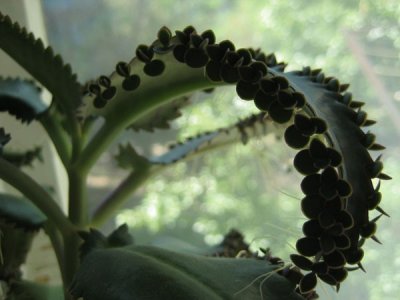

In this case, taking the juice can only aggravate the allergy.
In children when instilling eyes or nose with juice mucous membranes may become inflamed.
Eating at the same time with dairy products can lead to severe distress.
The balance of risk and health benefits should be carefully weighed for people who have cirrhosis of the liver, hepatitis, diabetes mellitus, glomerunephritis, rheumatism, and low blood pressure. Should not be used for malignant tumors.
Doctors advise against using medicines containing Kalanchoe during pregnancy.
Kalanchoe for centuries it has been widely used in folk medicine. However, it should be understood that Kalanchoe possesses not only medicinal properties, but also has contraindications. Therefore, any treatment should be carried out only after consulting a doctor.
Negative effects and contraindications of Kalanchoe
The healing properties and contraindications of Kalanchoe are due to its rich chemical composition and therapeutic effects on the human body, which depend on the field of application and dosages. External use is practically safe, in rare cases, the appearance of puffiness, redness and burning sensation on the skin is possible. This is a manifestation of allergic intolerance and in order to avoid negative consequences, therapy should be discontinued.
For internal use, there are contraindications that should be followed. It is not recommended to take Kalanchoe when:
- Liver cirrhosis and hepatitis;
- Hypotension;
- The presence of tumors;
- Pregnancy;
- Children under 3 years of age;
- Individual intolerance:
We treat erosion of the cervix
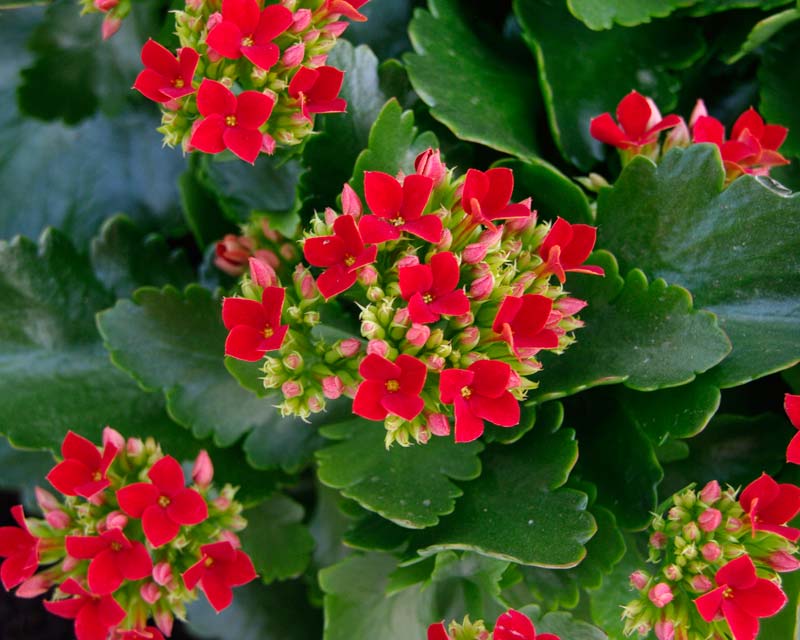

This wonderful flower doctor is a woman's faithful assistant. With the help of Kalanchoe juice, you can cure the erosion of the cervix, for this you need to soak a tampon with it and insert it into the vagina. The healing effect is achieved in a couple of weeks of regular use. The same treatment can help with birth ruptures.
For nursing mothers, this plant is useful because its juice will help get rid of cracked nipples and irritation around. To do this, you just need to drop a couple of drops on the sore spot.
Kalanchoe can be dripped into the nose
The use of Kalanchoe in folk medicine has reached a wide scale, since sometimes pharmacological agents are powerless against existing viruses and bacteria. The sap of the plant is instilled into the nose, after which rhinitis, rhinitis, sinusitis are treated.
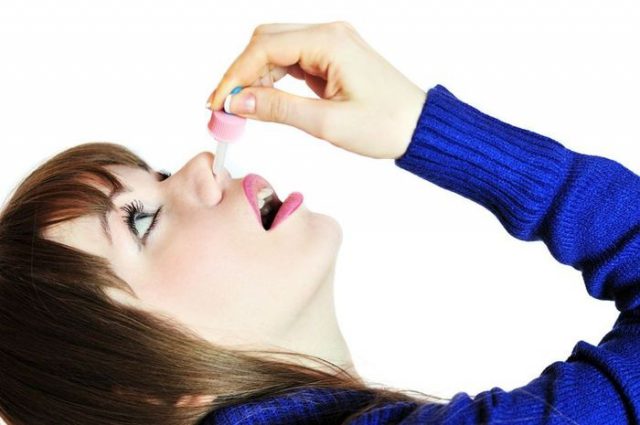

With the help of Kalanchoe, you can treat:
- tuberculosis
- dermatitis and other skin diseases
- various inflammatory processes
- burns and cuts
- bedsores and periodontal disease
- varicose veins and other types of hematomas
Kalanchoe juice can be dripped not only into the nose, but also into the eyes in case of burns by welding or laser. To do this, the juice does not need to be diluted with water, but used in its natural form. The recipes for the preparation of the medicine are quite simple. The effectiveness of the recovery is influenced by the quality of the preparation of the folk remedy.
What does Kalanchoe look like
Kalanchoe is an evergreen succulent plant from the Tolstyankov family.It is easy to recognize it - the plant has straight, strong stems, on which fleshy and glossy oblong leaves with jagged edges are located opposite each other. The upper leaves are green, the lower ones can have a bluish or light purple tint. The plant does not bloom every year, but it produces unusual and very beautiful flowers with bright red petals.
The plant can become a real gem in the collection of any grower. And yet, the benefits of Kalanchoe for the home are not limited to the external beauty of the plant. The flower is appreciated for the vitamin composition of its leaves, which contain ascorbic acid, polysaccharides, minerals magnesium, iron, aluminum. Kalanchoe juice, when used internally and externally, has health benefits - and is actively used in traditional and home medicine.
Conditions of detention and care
Like all succulents, the medicinal plant has the ability to accumulate moisture, so it does not need frequent, abundant watering. The optimum temperature is + 18-25 ° С. The flower tolerates heat well and loves light, but on hot sunny days after twelve hours it is advisable to place it in partial shade to protect the leaves from burns. In winter, the temperature should not be allowed to drop below + 10 ° C - the Kalanchoe may die. You also need to protect it from drafts. Caring for a plant at home is quite simple and will not be a problem even for novice flower growers.
Breeding methods
Succulent plant uses 3 methods: vegetative, with the help of seeds, cuttings. The first is the simplest and most accessible. Brood buds with air roots formed between the teeth will germinate if the leaf is laid with the inner side up, sprinkled with earth and sprayed with water. For this property, the flower is referred to as "pseudoviviparous". When young plants reach 10-15 cm, they are planted in separate pots.
To obtain a large number of sprouts, seeds are used. They are sown in March-May in moist soil, lightly pressing with your fingers, then covered with foil. The best germination is observed at a temperature of + 20-22 ° С. The polyethylene is regularly lifted to provide fresh air. When shoots appear in 4-5 weeks, thinning is carried out, leaving the strongest and strongest shoots. After transplanting into separate containers for 8-10 days, young plants are placed in a darkened place for better rooting.
A new flower is formed from a cutting or leaf. Separate young shoots, leave for 3-4 hours to dry the cut. Then placed in moist ground and covered with a glass container, creating a greenhouse environment. Once every 1-2 days, the jar is removed for airing. It is permissible to preliminarily put a leaf or a stalk in water and place it in the ground after the roots appear.
Plant transplant
Required as the flower grows, when the roots fill most of the space and protrude above the ground. The pot is chosen to be voluminous, wide. A drainage layer is laid at the bottom to absorb excess moisture. The transplant is carried out in the spring. It is forbidden to do this during the flowering period. They use a transshipment method so as not to disturb the root system. After watering, the plant is removed together with an earthen clod, transplanted into a new container and soil is added to the required level.
Pinching and trimming
Produced to avoid excessive growth in height and to improve the development of young side shoots. With scissors, carefully remove the thinned leaves at the top of the plant. To give Kalanchoe strength, the peduncle is removed, and pruning is also used for decorative purposes to correct the shape.
See More: Healing Properties of Kalanchoe Juice: Application in Medicine and Cosmetology
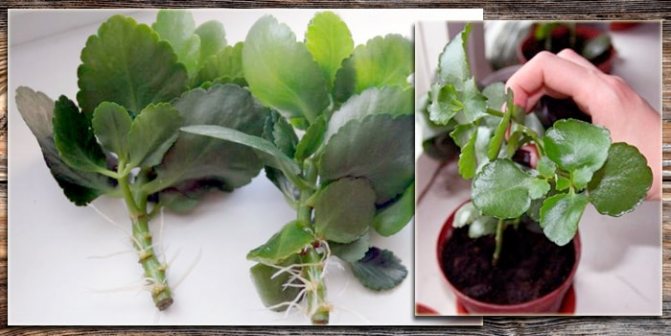

Soil, fertilizing and watering
The maximum amount of moisture is required for the flower in spring and summer, during the period of intensive growth. Water it every 3-4 days in small portions - excess liquid will lead to rotting of the root system.Do not allow the top layer of the earth in the pot to dry out. For irrigation, settled water is used: in winter at room temperature, in summer - cool.
The soil for the plant is purchased in a floriculture store (soil for cactus is suitable) or prepared independently. To do this, coarse sand, humus, leafy earth are mixed in equal proportions, crushed birch coal, and brick chips are added. To ensure rapid growth and strengthen the flower, once every 4–6 weeks, cactus top dressing or fertilizer based on nitrogen components is introduced into the soil. Do not use organic mixtures.
Pest and disease control of the flower
The danger is aphids. Insects feeding on plant sap multiply rapidly and are able to destroy the Kalanchoe, as well as the flowers in the vicinity. Infected plants are treated with an aqueous solution of laundry soap (10 g per 500 ml), avoiding getting the product into the ground. If time is lost, the affected bushes will have to be destroyed. Also, the flower is susceptible to attack by scale insects - slightly larger winged insects. The leaves turn gray, dry up. Pests are collected by hand, then the Kalanchoe is wiped with cotton wool soaked in vodka or alcohol. Diseased flowers are sprayed with garlic infusion. For its preparation, crushed cloves are poured in 200 ml of water, left for 2 hours, filtered.
With high humidity and a lack of light, the risk of gray mold disease increases. A specific bloom and weeping spots appear on the leaves. When the room is too dry and hot, the flower becomes susceptible to powdery mildew. To combat these problems, fungicidal agents are used, which are sold in specialized departments. When damaged by stem rot, black spots are formed on the stem and leaves. Treatment is carried out with appropriate drugs for this disease, if it does not help, the infected specimen is destroyed.
How to achieve flowering
Budding usually occurs in winter, when daylight hours shorten and air temperature drops. To activate the process, you need to put the pot with the plant in a cool place (no higher than + 16 ° C) for six weeks. The flower should be in the dark for 10-12 hours a day, the rest of the time in dim light. Reduce watering frequency. After the buds are formed, the pot is transferred back to the windowsill. The benefits and healing qualities of Kalanchoe do not depend on flowering.
In addition to pinnate, common among Russian amateurs plant species include the varieties Degremona, Blossfeld, Fedchenko. All of them have external differences from each other, however, they care for them in the same way as for most succulent perennials. The medicinal properties of these representatives of the bastard family are less pronounced.
Description
Kalanchoe grows in the tropics, namely in Africa, America and finally in Southeast Asia. Belongs to the fatty family. These are a variety of shrubs, semi-shrubs, herbaceous perennials, succulent.
The Degremona and Kalanchoe pinnate varieties contain more medicinal properties than others. They contain a lot of organic acids, polysaccharides and flavonoids. Moreover, they are sources of useful microelements and vitamins.
Degremona is a herbaceous perennial with a straight, non-branching stem and thick leaves, in the form of a triangle, along the edges of which brood buds are formed. Mini plants already have small roots, so after they fall off, they immediately take root.
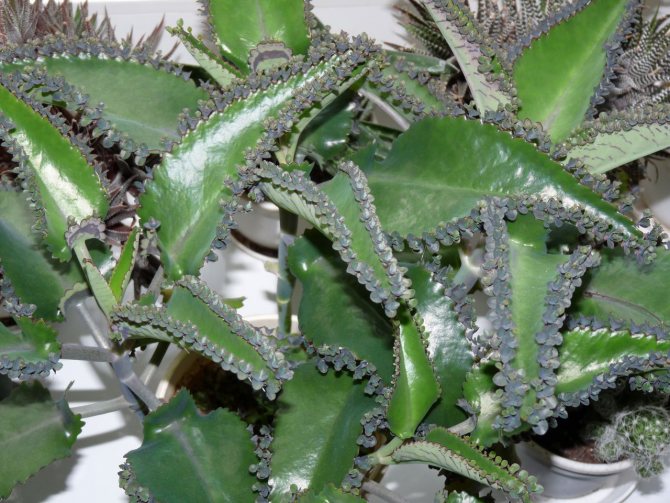

Kalanchoe Degremona
Pinnate - is also a herbaceous perennial with juicy leathery leaves that have serrated edges. Unlike Degremon, it is not viviparous.
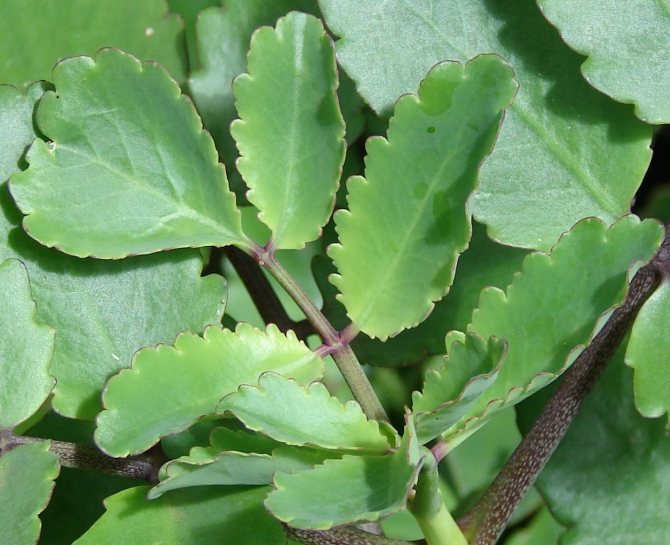

Kalanchoe pinnate
The homeland of these species is the island of Madagascar.
What attracts a flower
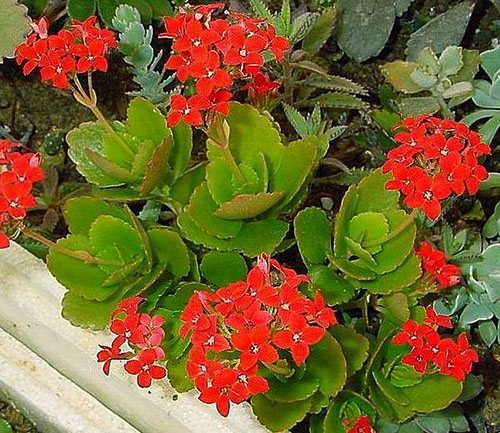

Kalanchoe belongs to succulents, that is, to plants that accumulate water in reserve and do not require frequent watering.The closest relative of this plant are Rhodiola rosea and sedum. The genus Kalanchoe is numerous, but only two species have medicinal properties - Kalanchoe pinnate and Degremona.
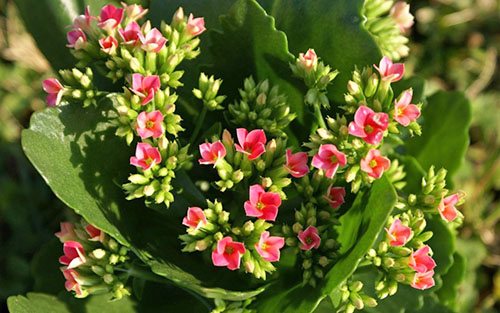

The flowers are very decorative. But a special property is the way children reproduce. Regardless of the age of the plant, from the flowering, a baby develops on the jagged leaves in each depression, which can fall, take root and become a new plant. This is a genus of medicinal Kalanchoe - bryophyllum, a sprouting leaf. In addition, Kalanchoe reproduce by cuttings and seeds.
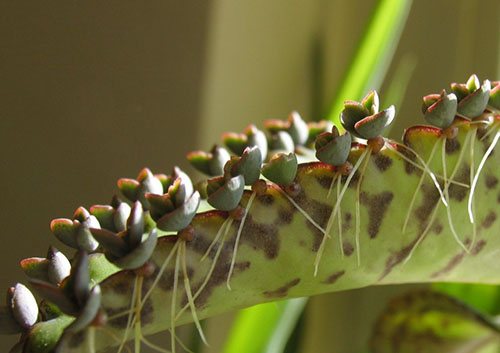

Resistant to adversity, almost not sick, the blooming healer has become an adornment of almost every apartment. Amateurs tell about the beneficial properties of the Kalanchoe, passing the stalk.
What does Kalanchoe cure?
- Kalanchoe juice is used to treat purulent wounds, as well as to eliminate the symptoms of varicose veins. Prescriptions for the preparation of the medicine include juice, which should be dripped into the nose or taken orally, and tinctures
- To prepare the tincture, the leaves must be poured with boiling water, then allowed to brew, and then consumed inside. This recipe helps to cure inflammatory processes in the gastrointestinal tract and tuberculosis, as well as problems in the field of gynecology.


- With the help of Kalanchoe, they treat gum disease, dental diseases, as well as diseases of the throat and stomach
Kalanchoe with sinusitis
Kalanchoe with sinusitis is the first effective remedy. Treatment of Kalanchoe sinusitis is carried out according to the following scheme: it is necessary to prepare fresh juice and bury it in the nose every 2-3 hours. The number of drops for instillation depends on the patient's age, but for an adult, at least 3-4 drops are needed in each nasal passage. After applying Kalanchoe with sinusitis, a side reaction in the form of sneezing can be observed. But when you sneeze, the nasal passages are cleared. Kalanchoe is used both in the early stages of the disease and in the later ones, but always combined with medications
Home cosmetics
We cleanse the face. Wipe the face and neck area daily with a Kalanchoe leaf. To do this, you need to remove the film from it, knead it slightly and run it over the entire skin. To help the juice absorb better, tap the skin with your fingertips while massaging it. For the same purposes, you can use the Kalanchoe cosmetic cream, which contains 15% of the juice of this wonderful flower.
We fight wrinkles. A wonderful flower doctor can help to cope with this problem. For this there is a very effective remedy that you can prepare yourself: half a glass of water, two tablespoons of Kalanchoe juice and one teaspoon of honey. This product keeps the skin firm and elastic.
Get rid of age spots. Pigmented areas of the skin should be covered with gruel from crushed Kalanchoe leaves. The effect will be noticeable only with regular use. You can get rid of freckles in the same way.
Kalanchoe with a cold
The use of an amazing plant for children is very popular. Although adults quite often resort to the help of Kalanchoe. Treatment of a common cold is carried out with decoctions or plant juice. Sometimes aloe and onions are added to it. If you have chosen such recipes, you need to be very careful and proportions correctly.
The therapeutic effect is created at the moment of slight irritation of the nasal mucosa, as a result of which intense sneezing is caused. Thus, the child gets rid of the accumulated disease-causing mucus. For this reason, this plant is sometimes called the "sneezer".
Before using the juice for a child, it is recommended to test this remedy for yourself. This procedure will allow you to understand how it works. Another plus of such a test is the ability to achieve the correct concentration. It is also necessary to check if the child has an allergy to this plant. And this is a very important aspect of using Kalanchoe juice for children.After all, the plant can unnecessarily irritate the mucous membrane, thereby provoking a deterioration in the patient's condition. But if everything is done correctly and accurately, then a positive result is guaranteed. The baby's mucus will come out, and the baby will immediately breathe easier.
Historical reference
For a long time, no one knew about the healing qualities of the plant. However, there were still inquisitive minds who asked themselves the question: “Does Kalanchoe have medicinal properties? If so, which ones? " And only about 1962 in scientific institutes they started talking about him seriously. Scientists agreed that the juice of the Kalanchoe Degremon is very useful. Initially, it was about lubricating the sinus mucosa. Thus, a runny nose was perfectly cured. Juice was recommended to healthy people as a prophylactic agent during severe acute respiratory infections.
In the modern world, the Kalanchoe plant is considered to be a real panacea. The healing properties of "indoor ginseng" are not limited to the fight against the common cold. Fresh leaves of the plant perfectly stop bleeding, relieve puffiness, inflammation, treat purulent wounds, fistulas, frostbite, rashes, burns, abscesses and even eczema.
Transplant timing and technology
Kalanchoe pinnate is transplanted as needed, when the roots become cramped in the pot and can be seen on the surface of the earth:
- a wide pot with drainage holes is selected in a larger size, the drainage layer is laid on the bottom, sprinkled with a layer of soil;
- before transplanting, the plant is watered to moisten the soil;
- using the transshipment method, trying to minimize the disturbance of the horse system, with a lump of earth they transfer the Kalanchoe to a new place and cover the empty space in the pot with earth, slightly tamping it.
Planned transplants are carried out in the spring.
Necessarily transplanted after purchase from the store. Usually temporary containers are filled with poor peat soil that is not suitable for long-term use.
Flowering plants cannot be transplanted until the end of the flowering process.
Preparation of ointment and decoction
Recipe ointments based on Kalanchoe, a photo of which can be found on the Internet or a book on growing indoor plants, it is recommended to follow a specific recipe.
So, as a binder, it is important to use fats of your choice:
- Mutton.
- Canine.
- Chicken.
- Badger.
- Melted butter.
Production of ointment from kalanchoe carried out by carrying the total mass of fat and crushed plant through a steam bath. To do this, you need to place the raw materials in a glass container and put it in a double boiler or any other container, but only on a lattice surface so that the water does not touch the glass container.
After the temperature reaches 60 °, the future ointment should be left in this mode for 1 hour. Then it is removed from the steam installation and cooled for a day. This cycle must be repeated 2 more times.
After that, the mass with medicinal properties is warmed up and filtered through a clean napkin, then wrung out. The resulting substance is stored in a refrigerator.
In addition, the treatment can actually be carried out through decoction from the Kalanchoe. To obtain which, take a glass of water and 2 tablespoons of the juicy part of the flower and boil for 5 minutes. The broth is great for eliminating various types of inflammation of the mucous membranes.
Procurement methods
In order for Kalanchoe juice to be as useful as possible, first of all it must be properly prepared. Only the leaves and stems of the plant are used. They are cut, washed and stored for a week in the dark and cool. Only after this should you start making the healing liquid. The crushed ingredient is crushed. The resulting juice is sent to the refrigerator. It should be infused for a couple of days. After the specified time, you can use Kalanchoe. Healing transparent yellowish juice is completely ready to fight the common cold.
Due to the length of the manufacturing procedure, it is better to make a medicine in advance for the period of viral epidemics. So that it does not deteriorate, it should be preserved. For this, vodka is added to the juice in a ratio of 1:10. This remedy for the common cold is perfectly stored for a year and a half. And at any time, if needed, it is always at hand. At the same time, the preserved Kalanchoe fully retains its medicinal properties.
If you don't want to bother with the preparation of a unique remedy, you can easily purchase ready-made preparations for combating the common cold at the pharmacy, which include plant juice. After all, official medicine has long recognized the effectiveness of Kalanchoe. It is worth noting that pharmaceutical preparations have been created to treat not only the common cold, but also other ailments.
Use in home cosmetology
If this plant, amazing in its healing qualities, grows on your windowsill, you will be provided with good care for your skin. The main thing is to properly prepare the juice of the plant. Then, on its basis, you can prepare various masks and lotions that are no less effective than expensive cosmetics. They will give your skin freshness and pristine purity.
It is also worth adding a few drops of Kalanchoe juice to the daily used cream. By applying the leaves to your eyes for a couple of minutes, you can remove the black circles formed in the eye sockets as a result of fatigue. Pimples can also be dried with a piece of Kalanchoe, rubbing the inflamed skin with it.
Kalanchoe is a real miracle given to us by nature. This plant not only decorates our life, but makes it healthier and more beautiful.
You can get acquainted with folk remedies from Kalanchoe in the following video:
Kalanchoe recipes
To prepare medicines from Kalanchoe at home, use its juice. It is part of drops, ointments.
The juice is used to treat colds, ulcers, purulent infections, wounds, bedsores, dental diseases.
- To eliminate sore throat, use a rinse solution. To prepare it, you need to dissolve 2 tablespoons of plant juice in a glass of boiling water. Rinse your mouth 2-3 times a day.
- A compress will help speed up the healing process of wounds with burns, frostbite. 50 g of leaves should be chopped with a meat grinder. The resulting gruel is wrapped in a piece of gauze and applied to the affected area of the skin. It is necessary to change the bandage after 10 hours.
- To prepare Kalanchoe for a cold, 2 leaves of an adult plant should be crushed. Squeeze the liquid out of the vegetable porridge. It is necessary to bury the nose three times a day, 2 drops per nostril.
- To treat herpes, you need to treat the affected skin area with juice at least 3 times a day. You can enhance the effect of medicinal juice by adding an infusion of chamomile, calendula, honey.
Use for furunculosis
To do this, place the cut plant in a cool place for a week. Then it can be crushed and squeezed through a bandage or gauze juice. It is imperative to insist the remedy for two days. As soon as a precipitate forms, you can dilute the clear liquid with alcohol in a ratio of 20: 1. Store the product only in a cool place.
If you want to make an ointment, the technology is as follows. Take 30 ml of juice. Add 50 g of lanolin and the same amount of petroleum jelly to it. This ointment is used as one of the most effective wound healing agents for boils and trophic ulcers.
Decoction for babies
The uniqueness of the product lies in the fact that the plant is suitable for treating people of any age. Moreover, even infants are advised to use Kalanchoe decoction. An excellent effective remedy will relieve the baby of an unpleasant cold. It is only important to monitor the concentration of the medicinal decoction. The younger the child, the smaller it is.
In order to obtain a medicinal broth, you need Kalanchoe leaves. A few pieces are enough. They should be filled with 100 ml of water. After boiling this mixture, cool it completely. It is very important to start with low doses. This broth is recommended for the treatment of babies up to 2 years old. Of course, Kalanchoe juice is more effective and healing, which can be obtained in various ways.

